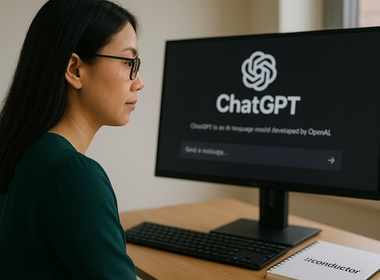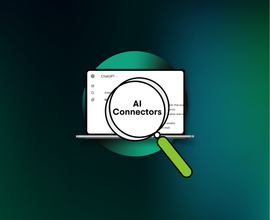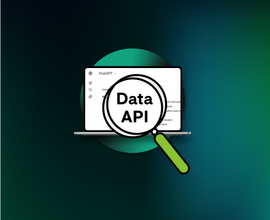Beyond Traffic: The CMO's Guide to Content Strategy in the AI Era
For years, organic traffic has been a key pipeline driver for enterprises, but with the rapid evolution of AI and the digital landscape, it's not nearly as reliable as it was. So, as a CMO, how do you adapt to keep your content strategy fresh and successful in the AI age?
Discover how to maximize your LLM visibility and move beyond traffic metrics.
Your top pipeline driver is down—Now what?
As a Chief Marketing Officer at a large enterprise, you've likely experienced a troubling trend in recent quarters: your organic traffic, historically one of your most reliable pipeline drivers, is declining. Maybe it's down significantly.
According to our analysis of thousands of enterprise websites, 71% have experienced an average organic traffic decline of 10% since the widespread adoption of AI assistants and Google's AI Overview. For many enterprises, this represents millions in potential revenue at risk.
The panic is understandable. For years, marketing leaders have lived and died by traffic metrics. Organic traffic has been the cornerstone KPI that boards, CEOs, and shareholders have come to expect in quarterly reports. It signaled market presence, customer acquisition potential, and ultimately, projected revenue.
But here's the uncomfortable truth: the digital landscape has fundamentally changed. The rise of generative AI and integrated search experiences has transformed how people discover and consume information. Google's AI Overview (AIO) results and the increasing prevalence of AI assistants like Claude, ChatGPT, and Perplexity mean users are getting answers without ever visiting your website.
This isn't just another algorithm update to weather. It's a paradigm shift that requires a complete reimagining of your content strategy.
Why traditional traffic metrics are no longer sufficient
The metrics that guided your strategy for the past decade are rapidly becoming obsolete:
- Direct website visits are decreasing as users get comprehensive answers directly in search results or from AI assistants.
- Time-on-page metrics are less meaningful when users might engage with your content via third-party interfaces.
- Conversion funnels are being disrupted as traditional user journeys fragment across multiple touchpoints and platforms.
Consider this: when someone asks an AI assistant about your industry, products, or solutions, does your brand appear in the response? When Google generates an AI Overview for a query relevant to your business, is your expertise represented? These questions matter more than ever—yet traditional analytics provide no answers.
The New Metrics: From traffic to visibility
Forward-thinking CMOs are pivoting from traffic-centric measurement to visibility-focused KPIs:
- AI Visibility (Brand Mentions & Website Citations)- How frequently your brand and content appear in AI-generated responses for relevant topics
- Competitive AI Marketshare - How often your brand appears versus competitors in AI engines like ChatGPT and Perplexity
- AIO Ownership - Your presence in Google's AI Overview results for key topics in your industry
- AI Content Authority Score - How authoritative AI engines consider your content on core topics
These metrics may not directly measure website traffic, but they indicate something potentially more valuable: your brand's integration into the AI knowledge layer that increasingly mediates consumer discovery and decision-making.
The challenge? Most enterprises lack the tools to measure these effectively, let alone optimize for them.
At Conductor, we've built these metrics into our platform, giving marketing leaders a dashboard that truly reflects performance in today's multi-channel reality. Get a demo today.
Take inventory of your current strategy
The good news is that your team may already be thinking about AI and taking steps to get ahead. Get a sense of your performance and areas of opportunity around AI by asking your team questions like:
- How are we currently evaluating our AI presence/ search performance?
- Where are we most vulnerable to losing traffic to AI?
- How are we ensuring we're creating authoritative content on a comprehensive topic, and not just targeting keywords?
Creating a content strategy for maximum visibility
With shifting metrics comes the need for a radically different content approach. The old playbook of keyword-focused content creation no longer suffices. Here's what's required instead:
1. Topic authority mapping
AI engines and modern search algorithms prioritize content from sources with demonstrated expertise across topic clusters, not just individual keywords. This requires:
- Identifying core topic areas where your brand needs to establish authority
- Mapping interconnected subtopic relationships that mirror how AI systems understand content
- Creating comprehensive content hubs that address user needs across the entire topic ecosystem
Many brands struggle here because they rely on outdated keywordKeyword
A keyword is what users write into a search engine when they want to find something specific.
Learn more research methods or intuition-based topic selection. Neither approach aligns with how modern AI engines evaluate and recommend content.
Technical deep dive: How AI engines evaluate topical authority
AI systems like large language models (LLMs) evaluate content authority differently than traditional search algorithms:
- Semantic embedding similarity - LLMs convert content into high-dimensional vector representations and measure semantic relatedness across documents
- Entity recognition and relationship mapping - Content that accurately identifies and explains relationships between domain-specific entities carries more authority
- Contextual relevance evaluation - AI systems assess how comprehensively content addresses a topic compared to the corpus of training data it contains
- Citation and reference analysis - Content that is frequently cited by other authoritative sources carries greater weight
Conductor's platform leverages these same principles to identify topical gaps and opportunities, analyzing content at the semantic level rather than just keywords.
2. Content gap identification at scale
Most enterprises struggle to systematically identify content opportunities. The typical approach—cobbling together insights from sales conversations, occasional customer interviews, and basic keyword research—simply doesn't scale. It leaves massive gaps and misses critical opportunities.
This is where Conductor's approach fundamentally differs. Our platform provides you with a prioritized list of content opportunities and gaps using the same topic clustering methodology as generative answer engines. We analyze actual content consumption patterns, not just keywords, giving you precise direction on what to create next.
Conductor’s proprietary Data and AI Engine identifies semantic gaps in your content coverage by analyzing:
- Query intent variations - The multiple ways users express the same informational need
- Competitive content coverage - Areas where competitors have established authority that you haven't addressed
- Content quality - Optimization opportunities based on poor content performance
- Topical authority coverage - Content breadth and depth across all of the search intent stages for a particular topic
3. Quality content creation at scale
The days of churning out thin content optimized for keywords are over. Both Google and AI engines have become remarkably sophisticated at identifying and promoting truly valuable content while filtering out low-quality material.
However, the demand for content hasn't decreased—if anything, it's accelerated. The challenge for enterprise marketing teams is creating genuinely excellent content that meets these elevated standards while maintaining the scale needed to compete.
According to our analysis of over millions of content pieces, content that ranks well in traditional search and appears frequently in AI responses shares several characteristics:
- Comprehensive coverage of a specific topic
- Clear, logically structured information with proper heading hierarchy
- Original insights backed by data or unique expertise
- Contextual awareness of related topics and questions
- Use of domain-specific terminology that signals expertise
The human-AI content collaboration model
The most successful enterprises are adopting what we at Conductor call the "expert in the loop" approach to content, leveraging AI for scale while ensuring human expertise, creativity, and brand wisdom remain central to the process. Here's how this model works:
- AI-powered research and analysis: Use AI to analyze vast amounts of data, identify content opportunities, and understand competitor positioning at scale.
- AI-assisted content creation: Deploy purpose-built AI tools designed specifically to create content optimized for visibility in both traditional search and AI engines.
- Human expert review and enhancement: Have your subject matter experts, brand guardians, and experienced content creators review, refine, and enhance AI-generated content.
- Performance measurement: Track both traditional metrics and new AI visibility indicators to continuously improve your approach.
This approach preserves what makes your brand unique—the institutional knowledge, customer insights, and distinctive voice that no competitor can replicate—while dramatically increasing your ability to cover topics comprehensively.
Conductor's approach: Content that's visible in AI
At Conductor, we've spent more than a decade analyzing what makes content visible in search. Now, we've applied that expertise to the AI era with tools designed from the ground up to create content that performs.
Our AI writer isn't just another content generation tool. Conductor Creator is built on 10+ years of data about what makes content truly visible. Key differentiators include:
- Brand knowledge integration: Our system incorporates your unique brand voice, product details, and institutional knowledge.
- Visibility scoring: Every piece of content receives a predictive visibility score, showing how likely it is to appear in both traditional search and AI-generated responses.
- Topic authority building: Content is created within the context of broader topic clusters, building cumulative authority that AI engines recognize and reward.
- Competitive differentiation analysis: Automated identification of areas where your content can be truly distinctive in an overcrowded market.
The result? Content that isn't just created to fill gaps, but strategically designed to maximize visibility in the channels that matter most to your audience.
From strategy to implementation: The CMO's roadmap
Transforming your content approach for the AI era requires organizational alignment and a clear implementation plan. Here's a pragmatic roadmap for CMOs looking to lead this transition:
Phase 1: Assessment
- Audit your current content performance using both traditional metrics and AI visibility indicators
- Evaluate your existing content creation processes and identify bottlenecks
- Benchmark against competitors to understand relative topical authority
- Establish baseline metrics for your new visibility-focused KPIs
Phase 2: Strategy development
- Define priority topic clusters based on business impact and visibility potential
- Develop a content authority plan targeting specific AI visibility goals
- Create a content production framework that balances AI efficiency with human expertise
- Set up new measurement systems to track AI-era metrics
Phase 3: Pilot implementation
- Select 1-2 high-priority topic clusters for initial focus
- Deploy new content creation processes using a human-AI collaboration model
- Produce an initial set of content pieces designed for maximum visibility
- Measure results against both traditional and new KPIs
Phase 4: Scale and optimization (Ongoing)
- Expand to additional topic clusters based on initial results
- Refine content creation processes based on performance data
- Develop training programs to enhance human-AI collaboration skills
- Continuously adapt to evolving AI capabilities and search behaviors
Conclusion: From traffic crisis to visibility opportunity
The decline in traditional organic traffic isn't just a crisis to manage—it's a catalyst for transformation. The most successful CMOs are using this moment to fundamentally rethink how their brands establish visibility and authority in an AI-mediated world.
This requires new metrics, new strategies, and new tools. But most importantly, it requires a new mindset—one that recognizes that success is no longer about driving visitors to your website, but about ensuring your brand's expertise is visible wherever your audience seeks answers.
The future belongs to brands that can seamlessly blend technology and human expertise to create content that's not just visible, but valuable. Is your organization ready to make that transition?







